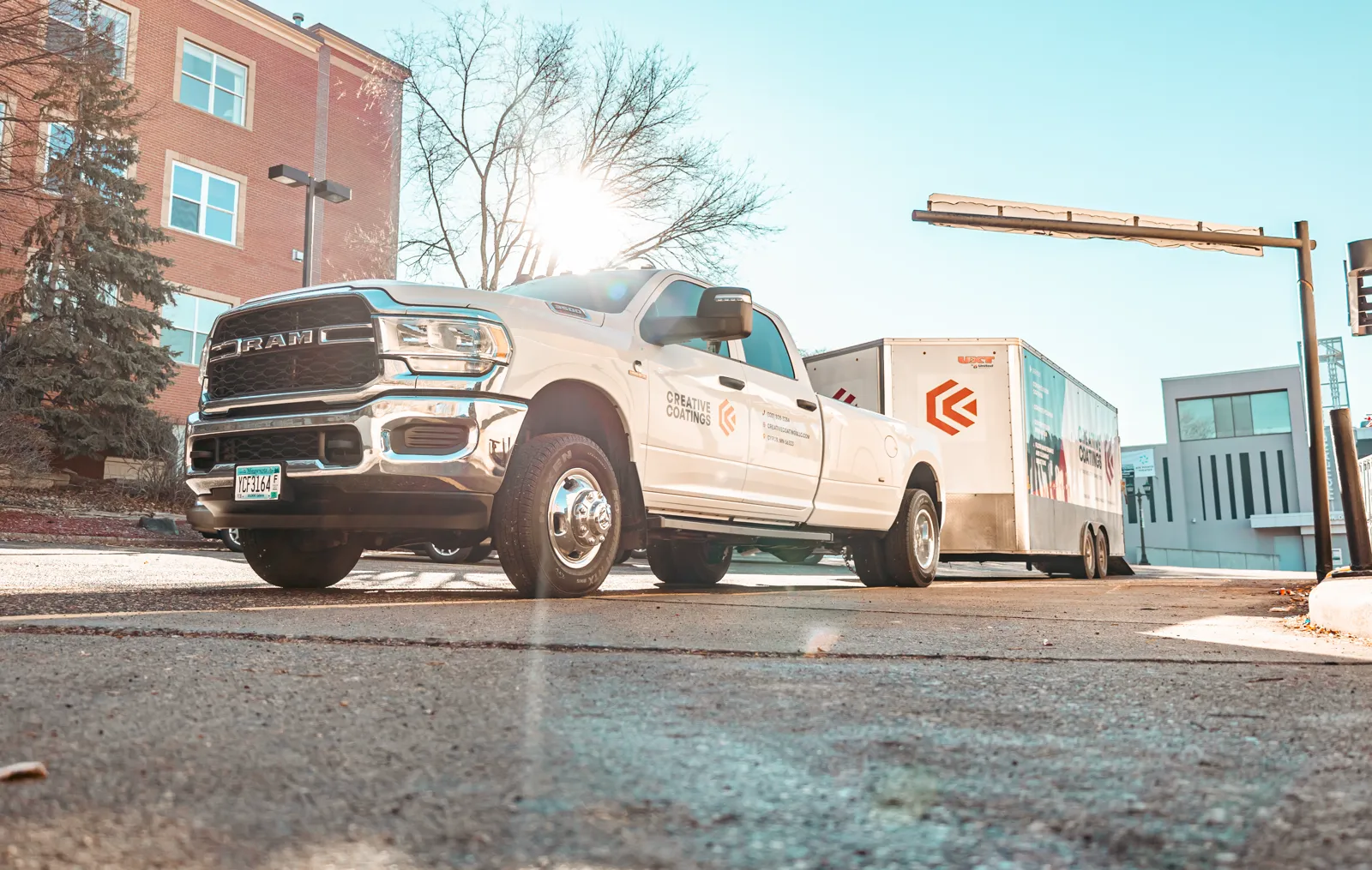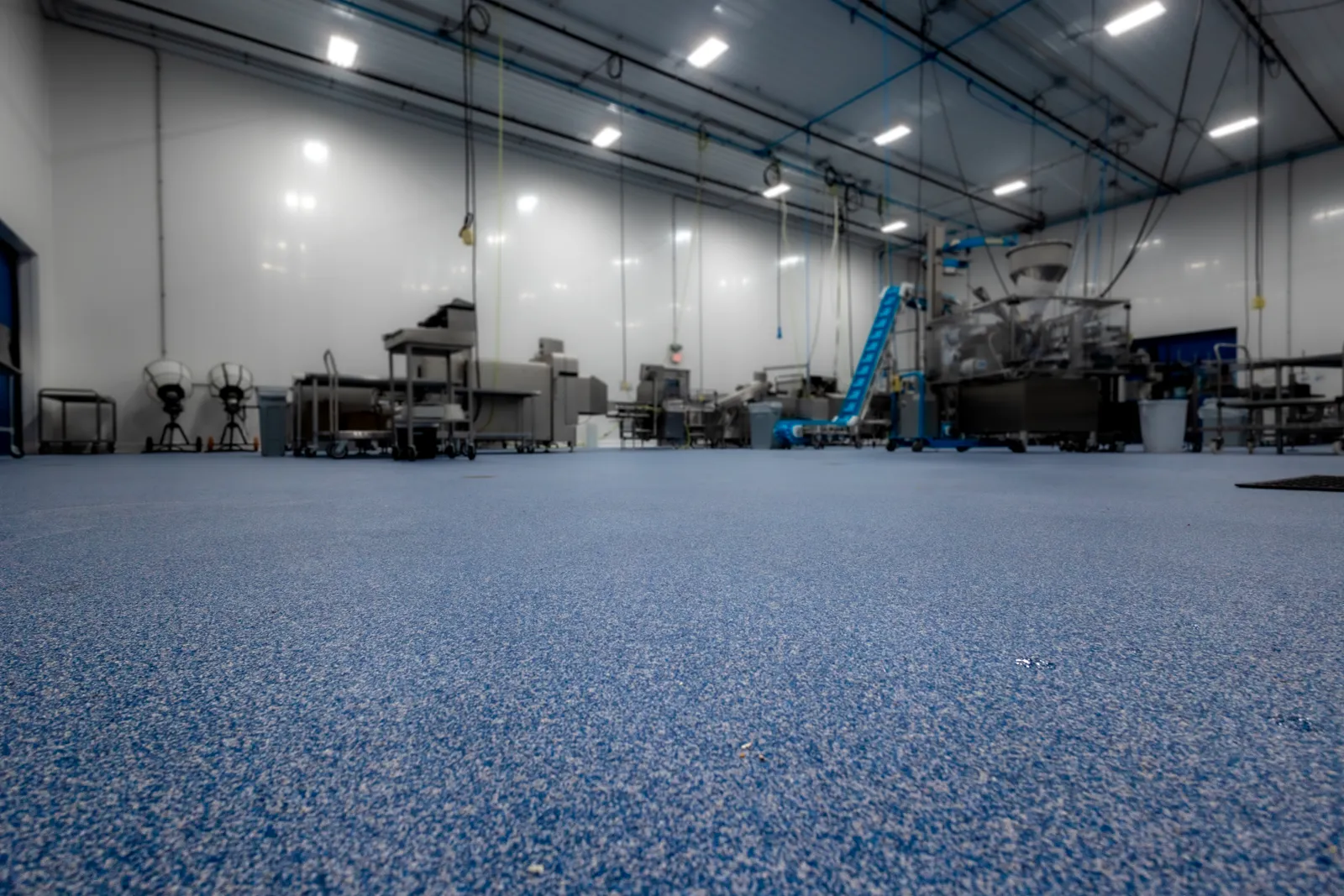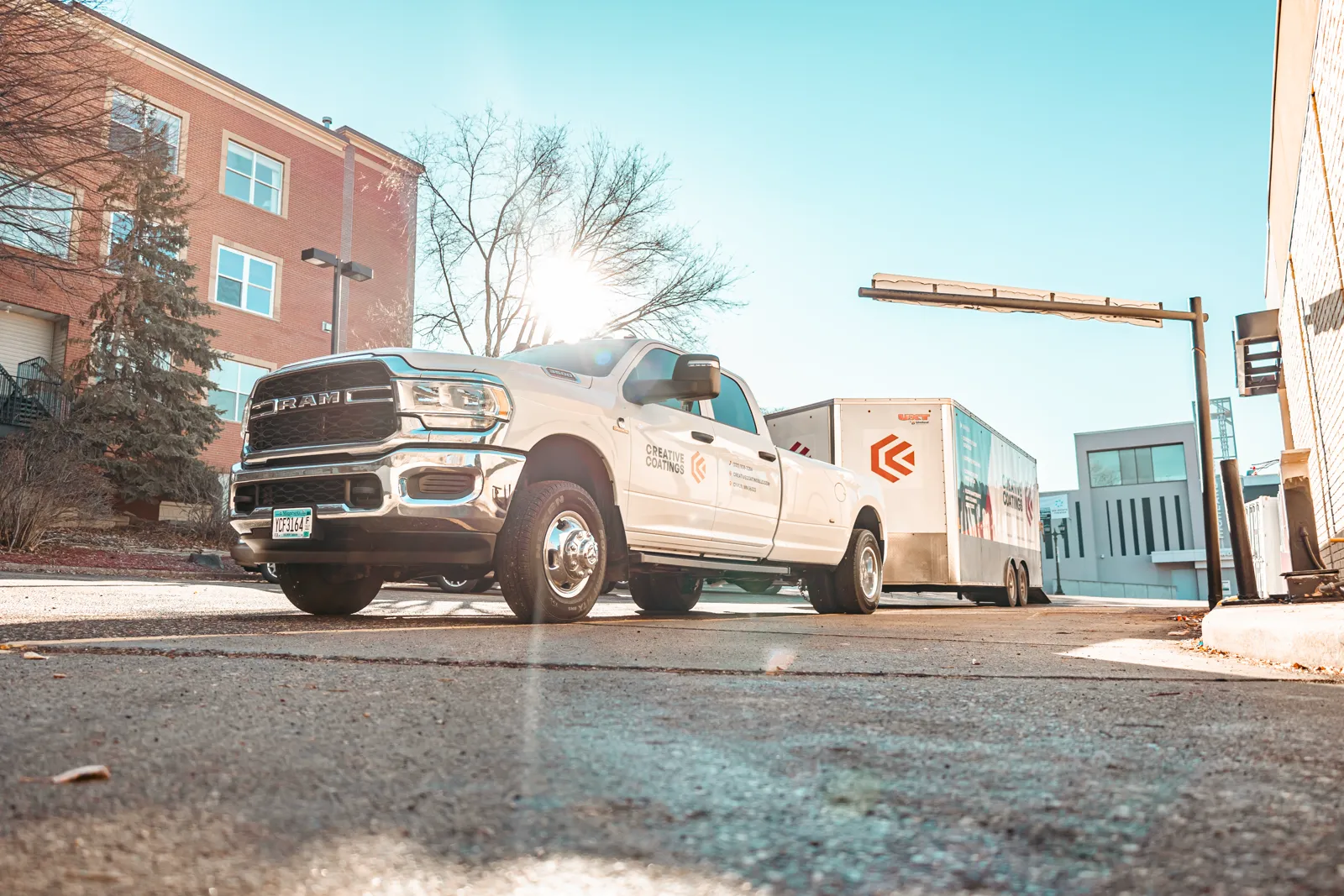Applying epoxy to a concrete floor can transform its look and durability. But, the key to a successful application lies in the preparation. Concrete floor cleaning is a crucial step in this process. It ensures the epoxy adheres well and lasts longer. This article provides a comprehensive guide on how to clean a concrete floor before applying epoxy. It covers everything from identifying common contaminants to the final inspection before application. Whether you’re a DIY enthusiast or a professional, this guide will help you learn how to clean a concrete floor before applying epoxy.
Understanding the Importance of Concrete Floor Cleaning Before Epoxy Application
Concrete floor cleaning is not just about aesthetics. It’s a vital step in the epoxy application process. Dirt, oil, and other contaminants can prevent the epoxy from adhering properly. This can lead to peeling or chipping over time. Moreover, a clean floor ensures the epoxy spreads evenly. This results in a smoother finish and a more professional look.
In short, thorough cleaning is one of the most important steps of a successful epoxy application. It can enhance the overall appearance of your concrete floor.
Looking to get your garage floor professionally coated? Creative Coatings would be honored to coat your floor! Get a free quote now by calling us (320)-808-3284 or by contacting us directly on our site!

Identifying Common Contaminants and Their Impact on Epoxy Adhesion
Concrete floors can harbor a variety of contaminants. These include dust, dirt, oil, grease, and old paint or sealants. Each of these substances can interfere with epoxy adhesion. They create a barrier between the concrete and the epoxy. This prevents the epoxy from bonding properly with the concrete surface.
Here are some common contaminants and their effects:
- Dust and dirt: Can cause a rough, uneven finish.
- Oil and grease: Can lead to peeling or chipping.
- Old paint or sealants: Can prevent the epoxy from bonding with the concrete.
Understanding these contaminants is the first step in effective concrete floor cleaning. It helps you choose the right cleaning methods and products.
Initial Cleaning: Sweeping and Vacuuming to Remove Loose Debris
The first step in concrete floor cleaning is to remove loose debris. This includes dust, dirt, and small particles. Start by sweeping the floor with a stiff-bristled broom. This helps to dislodge and collect larger debris. Then, use a vacuum cleaner to remove finer particles. A shop vac or similar is particularly effective for this task.
This initial cleaning prepares the floor for the next steps. It makes the degreasing and scrubbing processes more effective.
Degreasing: Choosing and Applying the Right Concrete Degreaser
After sweeping and vacuuming, it’s time to degrease the floor. Oil and grease are common contaminants on concrete floors. Choose a concrete degreaser that is suitable for your floor. Some products are designed for specific types of stains. Dilute the degreaser according to the manufacturer’s instructions. Then, apply it to the floor. Use a stiff-bristled brush to scrub the floor. This helps to break down the grease and oil. Finally, rinse the floor thoroughly. This ensures that all degreaser residues are removed.
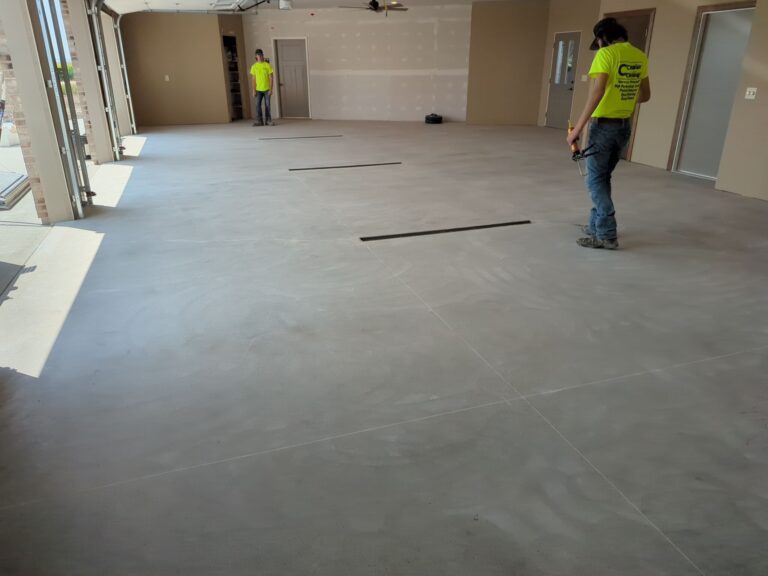
Scrubbing: Techniques for Effective Stain Removal
Scrubbing is a crucial step in concrete floor cleaning. It helps to remove stubborn stains that sweeping and degreasing may have missed. Use a stiff-bristled brush for this task. The bristles can reach into the pores of the concrete, dislodging any trapped dirt. Systematically scrub the floor. This ensures that no area is overlooked.
Remember to rinse the floor thoroughly after scrubbing. This removes any loosened dirt and cleaning solution residues.
Rinsing: Ensuring All Residues Are Gone
Rinsing is a vital step in concrete floor cleaning. It ensures that all residues from the cleaning solutions are removed.
Use plenty of water for rinsing. This helps to dilute and wash away the cleaning solutions.
Pay attention to corners and edges during rinsing. These areas often harbor residues that can affect epoxy adhesion. After rinsing, inspect the floor for any remaining residues. Repeat the rinsing process if necessary.
Addressing Stubborn Stains and Damage
Even after cleaning, some stains may persist. These require special attention. Use a concrete stain remover for stubborn stains. Follow the product instructions carefully.
For cracks or holes in the floor, use a concrete patch product. This ensures a smooth surface for the epoxy.
- Fill the cracks or holes according to the product instructions.
- Allow the patch to dry completely before proceeding.
Remember, a well-prepared surface leads to a better epoxy finish. Don’t rush this step.
Drying: Preparing the Surface for Epoxy Application
Once the floor is rinsed, it needs to be dried. This is crucial before applying epoxy. Use a squeegee or a wet vacuum to remove excess water. This speeds up the drying process. Allow the floor to dry naturally. This may take several hours or even days, depending on the weather. Before applying epoxy, ensure the floor is completely dry. Any moisture can affect the adhesion of the epoxy. For a more in-depth guide on the drying process, click here.
Final Inspection and Precautions Before Epoxy Application
After cleaning, conduct a final inspection. Ensure the surface is clean and dry. Pay attention to edges and corners. These areas often harbor hidden dirt. Check for any remaining stains or damage. Address these before proceeding. Lastly, ensure the workspace is clean. This prevents contamination during the epoxy application.
Eco-Friendly and Safety Considerations in Concrete Floor Cleaning
Cleaning concrete floors involves chemicals. Some of these can be harmful.
Consider eco-friendly and non-toxic cleaners. They are safer for you and the environment. Always wear protective gear. This includes safety gloves, goggles, and suitable clothing.
Lastly, follow local regulations for chemical use and disposal. This ensures safety and compliance.
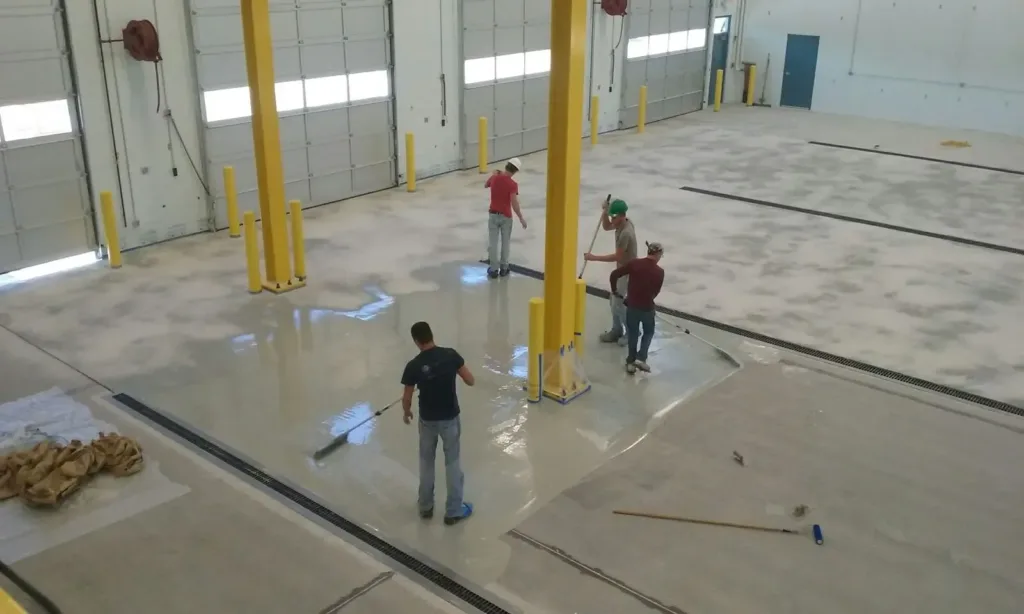
Conclusion: The Value of Proper Concrete Floor Prep for Epoxy Coating
Proper concrete floor cleaning is crucial. It ensures successful epoxy application. A well-prepared surface enhances the epoxy’s appearance. It also improves its longevity.
Remember, patience and attention to detail are key. They guarantee a successful epoxy floor project. In conclusion, invest time in concrete maintenance. It pays off in the long run.
